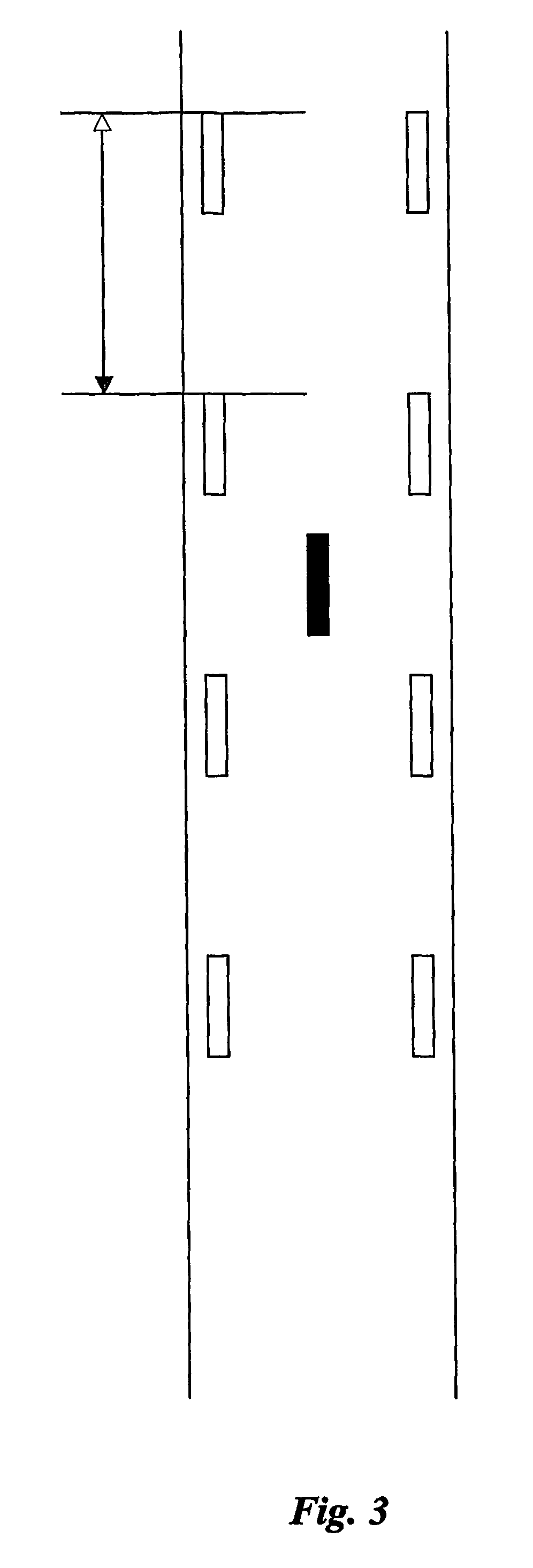Goal detector for detection of an object passing a goal plane
a technology of goal plane and detector, which is applied in the field of goal detector for the detection of objects passing a goal plane, can solve the problems of high update rate, difficult to determine correctly, and the spatial and temporal resolution of video cameras is often not sufficient to provide the necessary information, so as to facilitate signal processing, improve output precision, and preserve the smooth surface of the goal
- Summary
- Abstract
- Description
- Claims
- Application Information
AI Technical Summary
Benefits of technology
Problems solved by technology
Method used
Image
Examples
Embodiment Construction
[0032]A football goal 1 is shown in FIG. 1 having a left goalpost 2, a right goalpost 3 and a horizontal crossbar 4 there between. The goal 1 is placed on a sports field with the posts 2, 3 placed on the centre of the goal line (not shown) and the crossbar 4 being parallel with and directly above the goal line in accordance with the laws of FIFA, so that the goal line, the posts 2, 3 and the cross bar 4 delimits a flat target plane.
[0033]Five pairs of antennas 5 are arranged equidistantly on the crossbar 4 and two pairs 5 are arranged each on one post 2, 3. Each pair of antennas 5 comprises two identical antennas A, B that are arranged parallel with a displacement only in the direction perpendicular to the target plane. The antennas A, B are arranged so that the midway position is situated precisely half the diameter of the ball from the back edge of the goal line. A goal is scored when the whole of the ball pass over the goal line, between the goalposts 2, 3 and under the cross bar...
PUM
 Login to View More
Login to View More Abstract
Description
Claims
Application Information
 Login to View More
Login to View More - R&D
- Intellectual Property
- Life Sciences
- Materials
- Tech Scout
- Unparalleled Data Quality
- Higher Quality Content
- 60% Fewer Hallucinations
Browse by: Latest US Patents, China's latest patents, Technical Efficacy Thesaurus, Application Domain, Technology Topic, Popular Technical Reports.
© 2025 PatSnap. All rights reserved.Legal|Privacy policy|Modern Slavery Act Transparency Statement|Sitemap|About US| Contact US: help@patsnap.com



